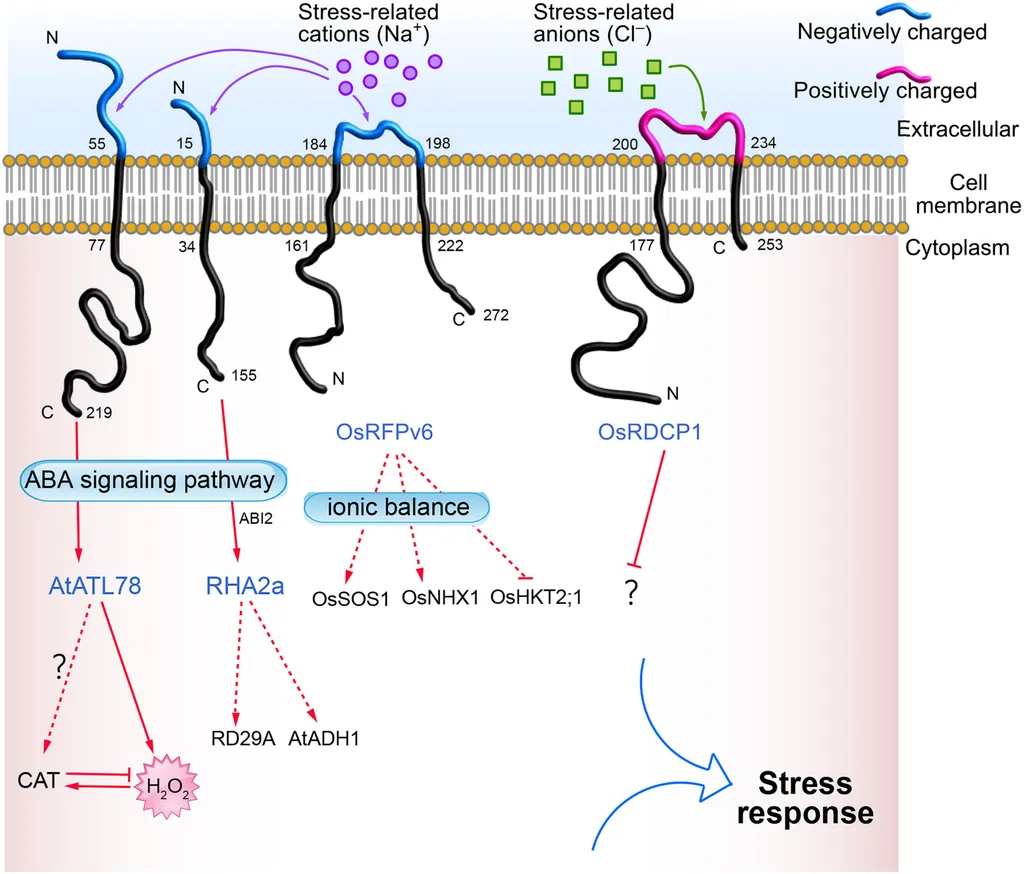In the ever-evolving landscape of plant biology, a recent review published in *Plant Stress* has shed light on the multifaceted roles of C2H2-type zinc finger proteins, offering promising avenues for enhancing crop resilience and productivity. These proteins, known for their transcriptional regulatory functions, have been found to play pivotal roles in both trichome development and abiotic stress adaptation, according to lead author Muhammad Aneeq Ur Rahman from the Biotechnology Research Institute at the Chinese Academy of Agricultural Sciences.
Trichomes, the hair-like structures on plant surfaces, are not just incidental features but serve critical functions in plant defense and environmental interaction. The review highlights how C2H2-type zinc finger proteins regulate the formation of both unicellular and multicellular trichomes in Arabidopsis and other plant species. “Understanding the molecular mechanisms behind trichome development is crucial for improving plant resilience against environmental stresses,” Rahman explains. This insight could pave the way for developing crops with enhanced protective features, potentially reducing the need for chemical pesticides and improving overall yield.
The study also delves into the proteins’ role in mediating plant responses to various abiotic stresses, including drought, oxidative stress, cold, heat, and salinity. Under drought conditions, these proteins enhance water retention and antioxidant activity, while during salt stress, they modulate the expression of protective genes and maintain ionic balance. “The ability of C2H2-type zinc finger proteins to integrate multiple stress responses makes them a valuable target for genetic engineering,” Rahman notes. This dual functionality could lead to the development of crops that are not only more resilient but also more adaptable to changing environmental conditions.
One of the most intriguing aspects of the review is the interplay between C2H2-type zinc finger proteins and phytohormones, such as ABA (abscisic acid) and auxin. This interaction underscores the proteins’ integral role in stress signaling networks, highlighting their potential as key players in improving plant stress tolerance. “By understanding the molecular cross-talk between trichome development and stress response pathways, we can unlock new strategies for crop improvement,” Rahman adds.
The commercial implications of this research are substantial. As climate change continues to pose challenges to agriculture, the need for crops that can withstand adverse conditions has never been greater. The insights provided by this review could facilitate the breeding and genetic engineering of crops with improved traits, ultimately enhancing food security and agricultural sustainability. “This research not only advances our scientific understanding but also offers practical solutions for the agriculture sector,” Rahman concludes.
With the findings published in *Plant Stress* and led by Muhammad Aneeq Ur Rahman from the Biotechnology Research Institute at the Chinese Academy of Agricultural Sciences, this study marks a significant step forward in the field of plant biology. As researchers continue to unravel the complexities of C2H2-type zinc finger proteins, the potential for innovative agricultural technologies and practices becomes increasingly promising. This research could shape future developments in crop improvement, offering hope for a more resilient and productive agricultural future.

